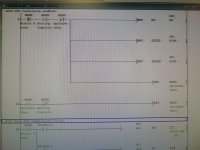RTD conversion enabled. What's going on here?
- Thread starter Mas01
- Start date
Similar Topics
Good Morning ,
I have a RTD , that I would like to wire into a 1756-IF8 Analog Input Card.
Would you all a simple wiring diagram , of what...
Good Afternoon ,
It seems like we always have problems with using Type J Thermocouples with our slip rings .
Would using a RTD at 10...
We are running a power flex 70 connected to a Delta V and I cannot get the drive to start because I am getting a STOP ASSERTD message on my HMI. I...
I am working on an installation that will require sensor cabling interconnecting sensors to PLC subject to outdoor temperatures. Will the ambient...
Hello!
I have RTD sensor with 4 wire and shield ( 2 red wire + 2 white wire + Shield)
and I want to connect to 1734-IR2 module. But in the manual...




